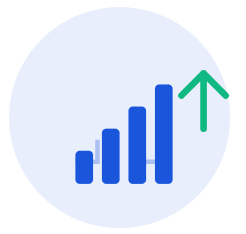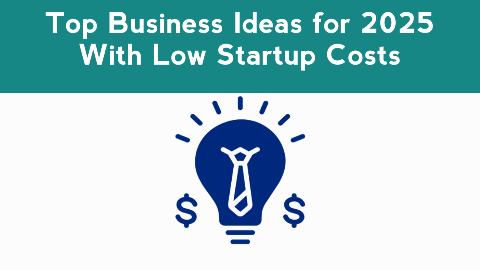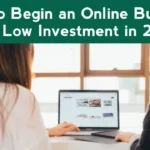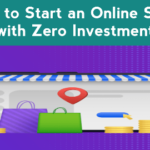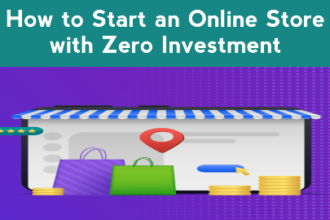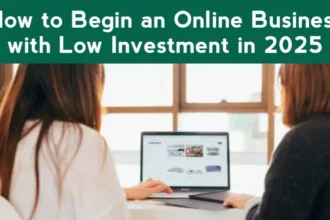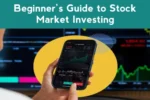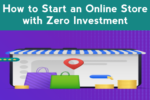Introduction: Your Business Journey Starts Here (Not with a Big Loan)
The entrepreneurial landscape in 2025 is defined by agility, digital leverage, and niche domination—not massive capital. The myth that you need significant funding to start is just that: a myth. The most successful modern businesses are often built on a foundation of specific skills, smart tools, and direct access to a global market, all with minimal upfront cost.
This list moves beyond generic ideas to focus on viable, low-cost business models with clear paths to profitability in the current economy.
9 Viable Low-Cost Business Ideas for 2025
1. Specialized Freelance Services
Move beyond being a generalist. The real money is in niche expertise.
- The 2025 Angle: Don’t just be a “writer.” Be an “SEO content writer for B2B SaaS companies.” Don’t just be a “designer.” Be a “brand designer for eco-friendly startups.”
- Startup Cost: Virtually $0. You need a laptop and an internet connection.
- How to Start: Create a razor-sharp portfolio on Contra or Upwork, and use LinkedIn to showcase your niche expertise.
- Growth Path: Increase your rates as you build a portfolio of case studies. Retainer contracts provide stable income.
2. Niche Online Coaching & Consulting
Monetize your knowledge by solving specific problems for a specific audience.
- The 2025 Angle: Instead of “life coaching,” offer “Career Transition Coaching for Tech Professionals” or “Nutrition Coaching for New Mothers.”
- Startup Cost: $0 for basic tools like Google Meet or Calendly for scheduling.
- How to Start: Offer free workshops or discovery calls to build initial testimonials. Use a platform like Teachable to eventually package your knowledge into a course.
- Growth Path: Scale from 1-on-1 sessions to group coaching programs and digital products.
3. Print-on-Demand E-commerce
Run a global merchandise business without ever touching inventory.
- The 2025 Angle: Target micro-communities (e.g., fans of a specific book series, hobbyists, or a local university) with highly specific, clever designs.
- Startup Cost: <$50 for a basic Shopify or Etsy store setup. You only pay for a product after a customer orders it.
- How to Start: Use platforms like Printful or Printify integrated with your store. Promote your niche designs on TikTok, Instagram, and relevant online forums.
- Growth Path: Expand into new product lines (mugs, posters, hats) and build a branded community.
4. Micro-Agency Model
You don’t need a big team to be an “agency.” Start as a solo specialist and scale by outsourcing.
- The 2025 Angle: Offer a single, high-demand service like “Short-Form Video Marketing for Restaurants” or “Email Marketing Funnel Setup.”
- Startup Cost: <$100 for software subscriptions (Canva Pro, a project management tool).
- How to Start: Secure your first 1-2 clients through your network or freelance platforms. Deliver exceptional results to build case studies.
- Growth Path: As you get more clients, outsource the execution to other freelancers while you manage the strategy and client relationships.
5. Content Creator in an Underserved Niche
Build an audience and monetize through multiple streams, not just ads.
- The 2025 Angle: Avoid saturated niches. Instead of “vlogging,” create content on “Urban Balcony Gardening” or “Budget-Friendly DIY Home Repairs.”
- Startup Cost: $0. Your smartphone is your primary tool.
- How to Start: Consistently provide value on one platform (YouTube, TikTok, or a blog). Focus on building a loyal community, not just follower count.
- Growth Path: Monetize through affiliate marketing (linking to products you use), brand sponsorships, and selling your own digital guides or merchandise.
6. AI Prompt Engineering & Consulting
A brand-new, high-value field born from the rise of generative AI.
- The 2025 Angle: Help businesses use AI tools like ChatGPT and Midjourney more effectively. This can involve writing sophisticated prompts, training custom models, or integrating AI into workflows.
- Startup Cost: $0 to start learning and practicing. Some advanced tools may have costs later.
- How to Start: Build a portfolio of successful AI-generated outputs (images, text, data analysis). Network with small business owners on LinkedIn who are curious about AI.
- Growth Path: Command high hourly or project-based fees as an early expert in a high-demand field.
7. Sustainable/Upcycled Product Line
Tap into the growing demand for eco-conscious and unique products.
- The 2025 Angle: Create products from upcycled materials (e.g., tote bags from discarded banners, jewelry from vintage components).
- Startup Cost: <$100 for initial materials.
- How to Start: Sell on Etsy or at local maker markets. Your brand story is your biggest marketing asset—share it on social media.
- Growth Path: Build a loyal customer base that values sustainability and craftsmanship, allowing for premium pricing.
8. Local Service-Based App
Bridge the gap between local skilled tradespeople (plumbers, electricians, cleaners) and their customers.
- The 2025 Angle: Create a simple, hyper-local app or booking website for a service that is underserved in your town.
- Startup Cost: <$100 for a no-code app builder like Glide or a simple website.
- How to Start: Partner with 2-3 reliable local professionals. You handle the booking, marketing, and customer service; they handle the jobs for a commission.
- Growth Path: Expand to more service categories and neighboring towns.
The 2025 Entrepreneur’s Mindset: How to Think to Succeed
- Start with a “Service” to Fund a “Product”: Use freelance or consulting work to generate immediate cash flow, which then funds the development of your more passive, scalable product (like a digital course or an app).
- Embrace the “Micro-Niche”: It’s easier to become the #1 solution for a very specific group than to compete as the 100th option for a general audience.
- Build in Public: Share your journey, challenges, and learnings on social media. This builds authenticity and an audience that is invested in your success.
Conclusion: Your First Step is the Most Important
In 2025, the barrier to entrepreneurship is your willingness to start, not the size of your bank account. The ideas listed above are levers you can pull using your existing skills, creativity, and the powerful (and often free) tools available today.
Your mission isn’t to pick the “perfect” idea, but to pick one and take the first step within the next week. Validate it, build a simple landing page, or talk to your first potential customer. Momentum is your most valuable asset.
Which of these 2025 business ideas sparks your curiosity? Share your top pick and one question you have about getting started in the comments below!
